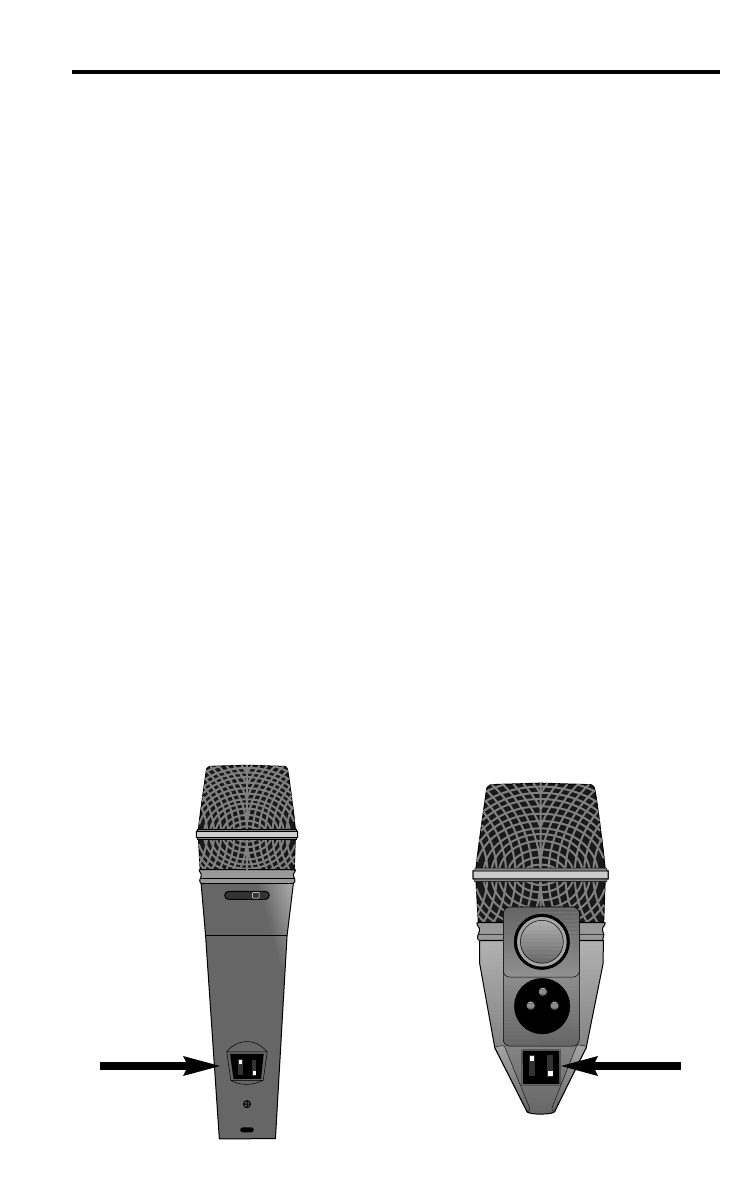
Using Your Q2 / Q3 Microphone
As you can see from these illustrations, both the Q2 and Q3 excel in
environments where there is significant unwanted ambient sound since
they deliver those signals originating directly in front of the mic capsule
itself while rejecting those that originate from behind.
The polar pattern also determines how prone a particular mic is to
inducing
feedback. Feedback is that characteristic nasty howling sound
that occurs when a mic is placed too close to a loudspeaker—the signal
from the loudspeaker is fed into the mic, then into the loudspeaker, then
into the mic, over and over again until an oscillating tone is generated.
Because the polar patterns utilized by the Q2 / Q3 are so good at
rejecting signal not coming from directly in front of the mic, you’ll find that
their use greatly minimizes feedback problems.
As shown in the illustrations below, the Q2 and Q3 mics also provide
switches that allow you to engage a 10 dB pad or a high pass filter
(HPF). For normal use, leave both switches in their “off” position.
Place the 10 dB pad switch in its “on” position when miking a signal
(such as drums or instrument amplifiers) that has a high sound pressure
level (SPL) or whenever you hear overload distortion at your mixer or
mic preamp input. Place the HPF switch in its “on” position to filter out
low frequency rumble (such as might be caused by onstage floor noise).
The Q2 / Q3 HPF is tuned to 80 Hz, with a rolloff of 12 dB per octave.
7
SAMSON
Q
2
M IC
HP
ATT
ON
HP
ATT
ON











